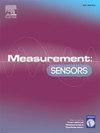A simple and inexpensive design of radioactive source for accurate level and height gauging in petrochemical industries
Q4 Engineering
引用次数: 0
Abstract
Radiation sources are used for measurement and control of industrial processes, determining the height of materials inside the vessel, analyzing the composition and structure of materials, and detecting defects in industrial processes due to the complexity of the production process. In petrochemical industries, the height of urea in a vessel can be measured using the nuclear level gauging method, which is a non-destructive technique. Therefore, the energy of the gamma emitting source, the design, and arrangement of the source geometry (including the point or rod sources), and the detector material (NaI (Tl) crystal or plastic scintillator) are crucial parameters. In this research, a nuclear level gauge, including the source, detector, and reactor containing urea and gases at high temperatures and pressures, was simulated by MCNPX Monte Carlo code and the results were compared and validated with experimental values. Then, the detector's response was evaluated and optimized based on the different arrangements of the radioactive source and its distances, as well as the type and geometry of the detector, and the best arrangement was selected. The comparison of the simulation results and the resulting analysis indicated that using point sources at specific distances (three points) instead of rod sources is a viable alternative due to its simpler structure, higher accuracy and stability, and lower production cost compared to the high cost of rod sources. Additionally, for accurate level and height gauging, rod detectors should be replaced with point detectors.
一种简单、廉价的放射源设计,用于石油化工行业的精确液位和高度测量
辐射源用于工业过程的测量和控制,确定容器内材料的高度,分析材料的成分和结构,以及检测工业过程中由于生产过程的复杂性而产生的缺陷。在石油化工行业中,可以使用核液位计法测量容器内尿素的高度,这是一种无损技术。因此,伽马发射源的能量、源的几何形状(包括点源或棒源)的设计和排列以及探测器材料(NaI (Tl)晶体或塑料闪烁体)是至关重要的参数。利用MCNPX蒙特卡罗程序对含尿素和高温高压气体的核液位计的源、探测器和反应器进行了模拟,并与实验值进行了对比验证。然后,根据辐射源的不同布置方式及其距离、探测器的类型和几何形状,对探测器的响应进行评价和优化,选择出最佳布置方式。仿真结果与分析结果的对比表明,使用特定距离(三个点)的点源代替棒源是一种可行的替代方案,因为它结构更简单,精度和稳定性更高,并且与高成本的棒源相比,生产成本更低。此外,为了准确测量水平面和高度,应该用点检测器代替棒检测器。
本文章由计算机程序翻译,如有差异,请以英文原文为准。
求助全文
约1分钟内获得全文
求助全文
来源期刊

Measurement Sensors
Engineering-Industrial and Manufacturing Engineering
CiteScore
3.10
自引率
0.00%
发文量
184
审稿时长
56 days
 求助内容:
求助内容: 应助结果提醒方式:
应助结果提醒方式:


